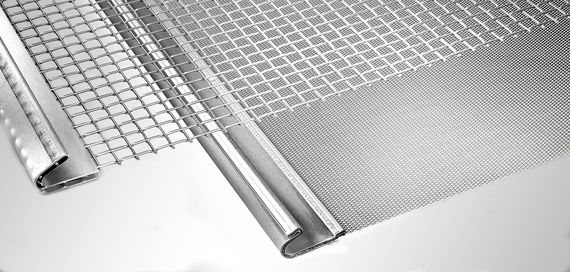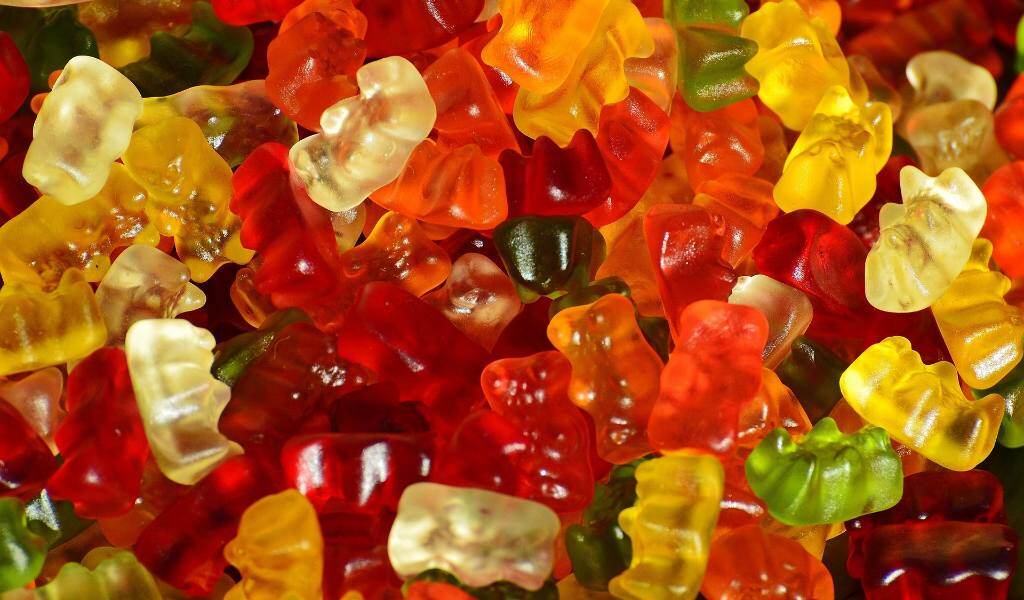Gummy Bear Production: The Role of Woven Wire Mesh Screen Sections
For decades, gummy bears have been one of the most popular sweets, enjoyed by millions around the world. In fact, did you know that over 100 million gummy bears are predicted to be produced every day?
Despite their popularity, few understand the precision that allows us to enjoy these gummy treats by the handful.
By this we are talking about the role woven wire mesh screen sections plays in the production process. From creating the ideal texture to improving the efficiency of your process, these screen sections are vital to creating the best product possible.
This is why W.S. Tyler focuses on sharing our 150 years of experience to help organizations across dozens of industries leverage the capabilities of wire mesh to achieve operational success that creates a standout end product.
In this article, we will provide insight into the woven wire mesh screen section are used to improve the quality and efficiency of a gummy bears production. You will learn:
- What the gummy bear production process looks like
- The definition of a woven wire mesh screen section
- How woven wire mesh screen sections fit into the gummy bear production process
- How you can customize your wire mesh to best accommodate gummy bear production
How Are Gummy Bears Made?
The process of making gummy bears starts with trays of corn starch. The design of the gummy bear is stamped into the corn starch using special dies, creating dozens of corn starch molds per tray.
The jelly-like mixture is then made simultaneously. Once made, the mixture is methodically poured into the cornstarch molds.
The filled molds are transferred to a refrigerator, where the jelly mixture cools for up to 24 hours.

The molds are then placed on a conveyor belt that flips the trays, disintegrating the molds to leave just the gummy bears. At this point, the cornstarch is sifted and recycled for future molds.
The gummy bears then travel to a vibrating screen to remove any remaining cornstarch. After removing the cornstarch, the gummy bears are coated to give them a sheen.
At this point, the gummy bears undergo a quality control process and are packaged accordingly.
What Is a Woven Wire Mesh Screen Section?

Woven wire mesh is versatile screening media comprised of hundreds of metal wires interwoven to form grid-like weave patterns. A rigorous weaving technique is used to ensure that each weave has uniform and precise pore openings.
This weaving process affords wire mesh users complete control over parameters such as wire diameter, mesh count, weave pattern, alloy, etc.
Now, woven wire mesh screen sections are panels of wire mesh that are designed to fit inside industrial vibrating screens. These screen sections typically feature either a plain or slotted opening to meet your material flow and screening requirements.
Screen sections, constructed using methodically selected alloys, are common in a wide range of industrial screening applications, such as mining, chemical processes, and, in this article, food and beverage.
Want more insight into how woven wire mesh is woven? Read the following article:
How Woven Wire Mesh Screen Sections Impact Gummy Bear Production
When producing gummy bears, woven wire mesh screen sections are integral to the removal and recycling of the corn starch used when molding them. Once the gummy bears are formed and cooled, they are placed into a vibrating screen outfitted with wire mesh screen sections that remove excess cornstarch from their surface.
This ensures each gummy bear is clean and ready to be coated.
But in addition to removing the cornstarch, woven wire mesh screen sections are often used to sift and filter the used cornstarch. They work to remove agglomeration, impurities, and debris, allowing you to reuse the cornstarch for future molds.
In turn, waste and operational costs are reduced. This helps ensure an efficient and sustainable operation.
Wire Mesh Screen Sections Tailor-Made for Food and Beverage
As stated above, there are several ways in which woven wire mesh can be customized to accommodate your needs. That said, W.S. Tyler's food-proven hook strips and 318 stainless steel alloy provide qualities that are particularly beneficial to food and beverage applications.
Food Proven Hook Strip
These specially designed hook strips are designed to help you meet the stringent guidelines of food and beverage applications. What makes this hook so special is that its mesh screen is welded onto the hook itself, with the seam sealed using FDA-approved adhesives.
This differs from other hook strips, as these variants often fold the hook over the mesh to secure it. And as a result, corn starch particles cannot become lodged throughout the hook hardware, potentially contaminating future gummy bear batches.
Looking for more information on screen section hook strips? Read the following article:
318 Stainless Steel
318 stainless steel is a specialty stainless steel known for providing high resistances to corrosion and high temperatures. Classified as austenitic stainless steel, 318 stainless steel proves particularly beneficial in food and beverage applications that expose your screen sections to common chlorides and acids.
Its heightened strength and durability also mean screen sections can provide long-lasting performance and withstand harsher cleaning procedures.
But possibly the most beneficial quality is that 318 stainless steel is magnetizable. This is critical as it can be used to remove broken wire fragments, preventing them from being carried by the recycled corn starch into future gummy bear batches.
And while not as magnitizalbe as 430 stainless steel, which is widely used in food and beverage applications, it offer tensile strength and surface hardness that is far superior.
Opening up Peak Performance
Woven wire mesh screen sections are the unsung hero for the efficiency and precision of your gummy bear production process. They ensure that the surface of the gummy bears is smooth and desirable while purifying recycled corn starch to protect the integrity of future batches.
But not that you understand how screen sections fit into the process; you must now take the time to understand what it takes to design the perfect mesh. Of all the wire mesh parameters to consider, the percentage of open area is one of the most vital, as it controls just how precise your screens are.
Driven by innovation and quality, W.S. Tyler is here to provide tailor-made wire mesh solutions that will enhance the operational success you achieve.
Read the article below to learn everything you need to know about percentage of open area and continue your journey:
About Ronnie Brown
Ronnie is the Content Writer for W.S. Tyler and has four years of experience as a professional writer. He strives to expand his knowledge on all things particle analysis and woven wire mesh to leverage his exceptional writing and graphic design skills, creating a one-of-a-kind experience for customers.




